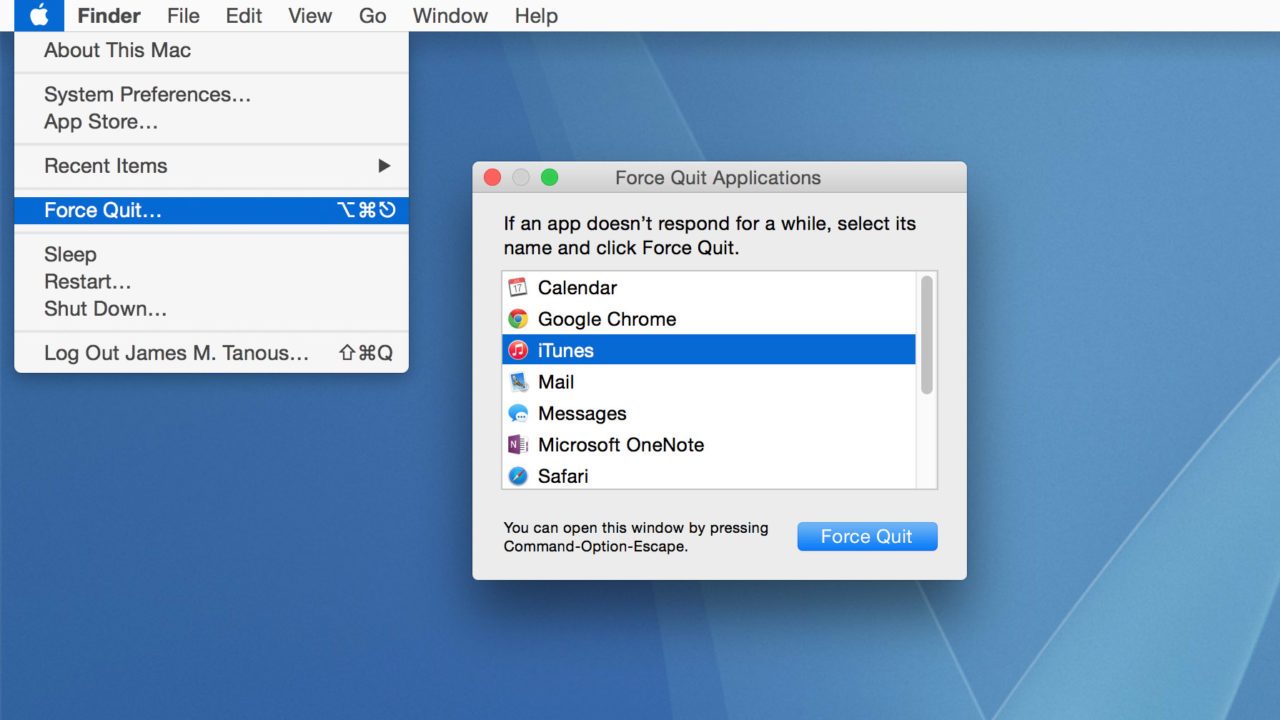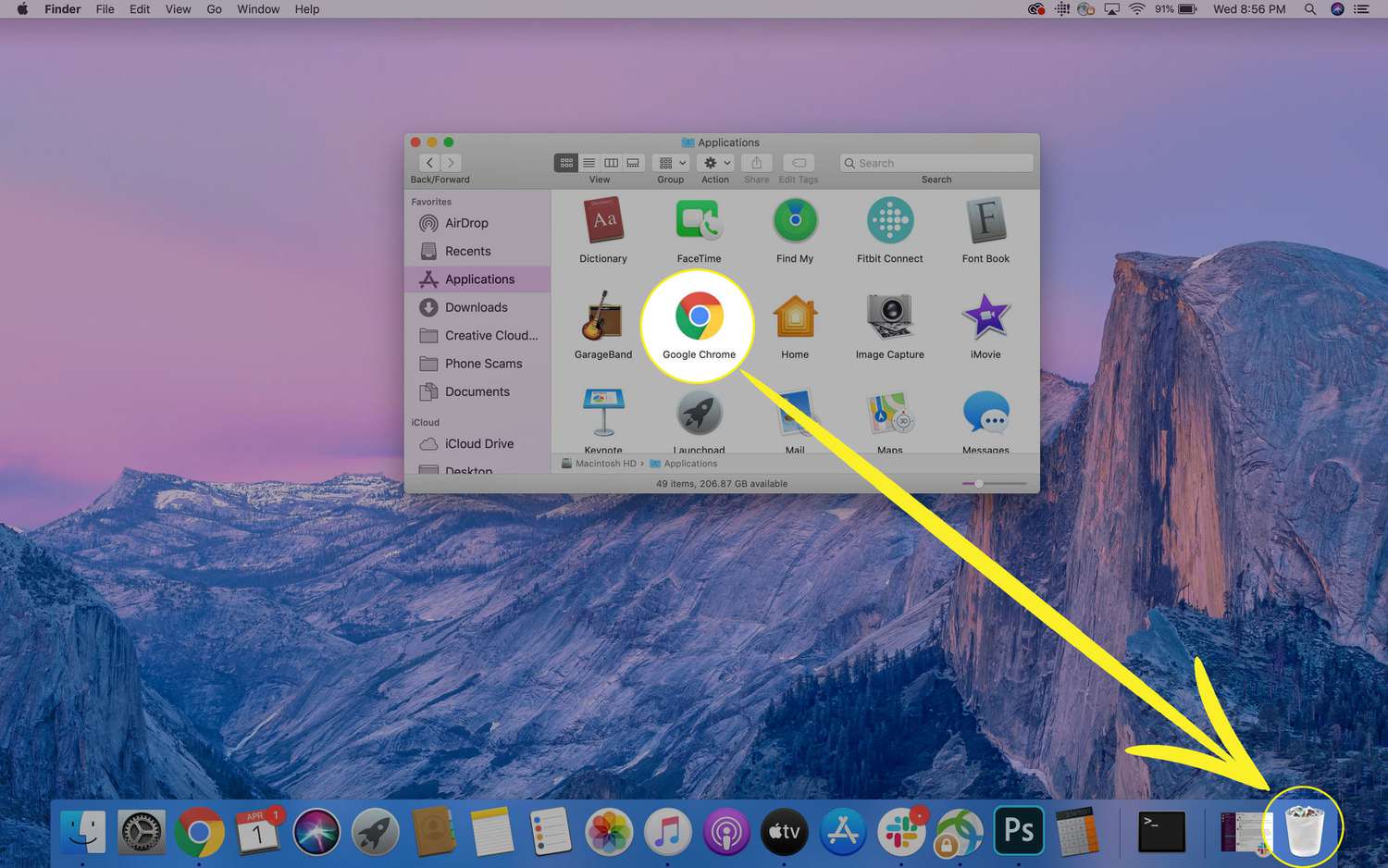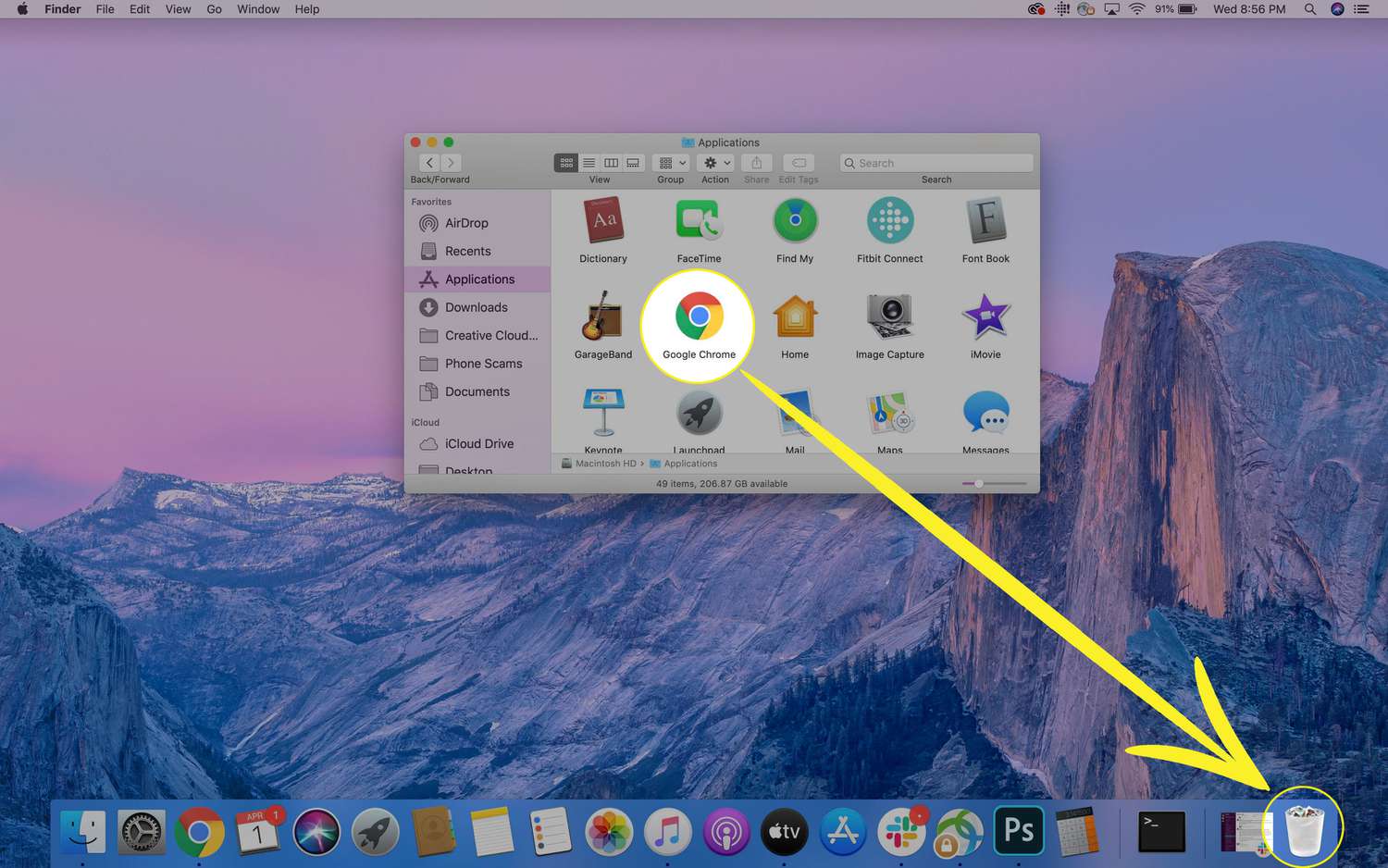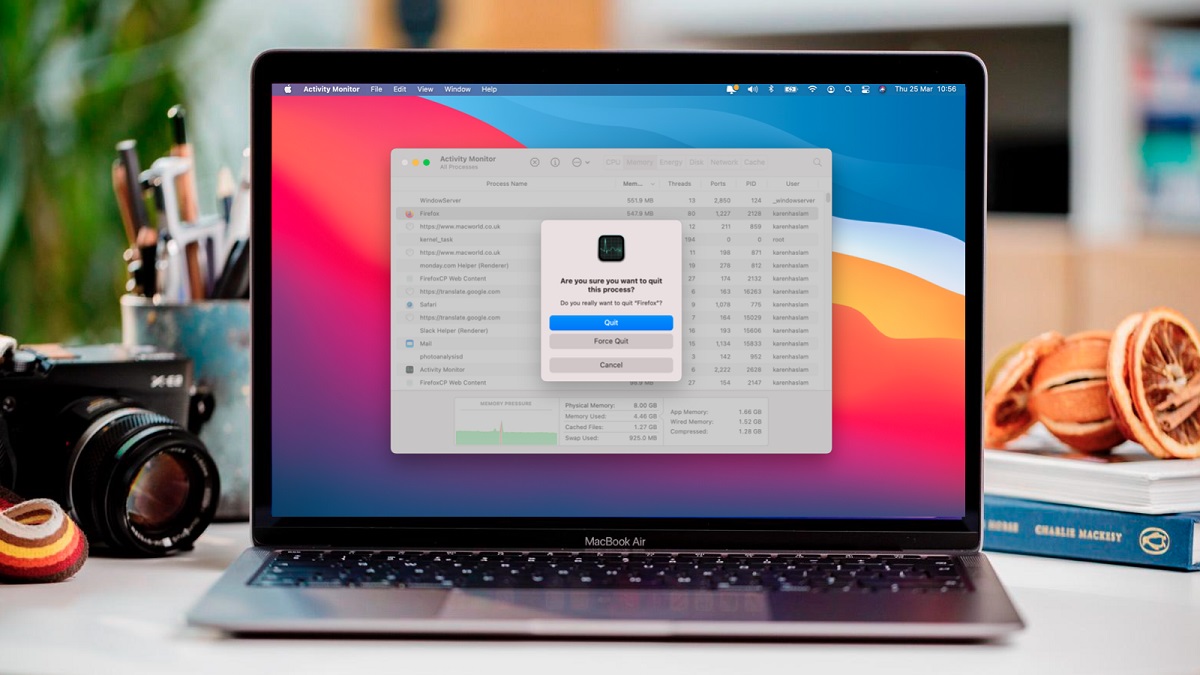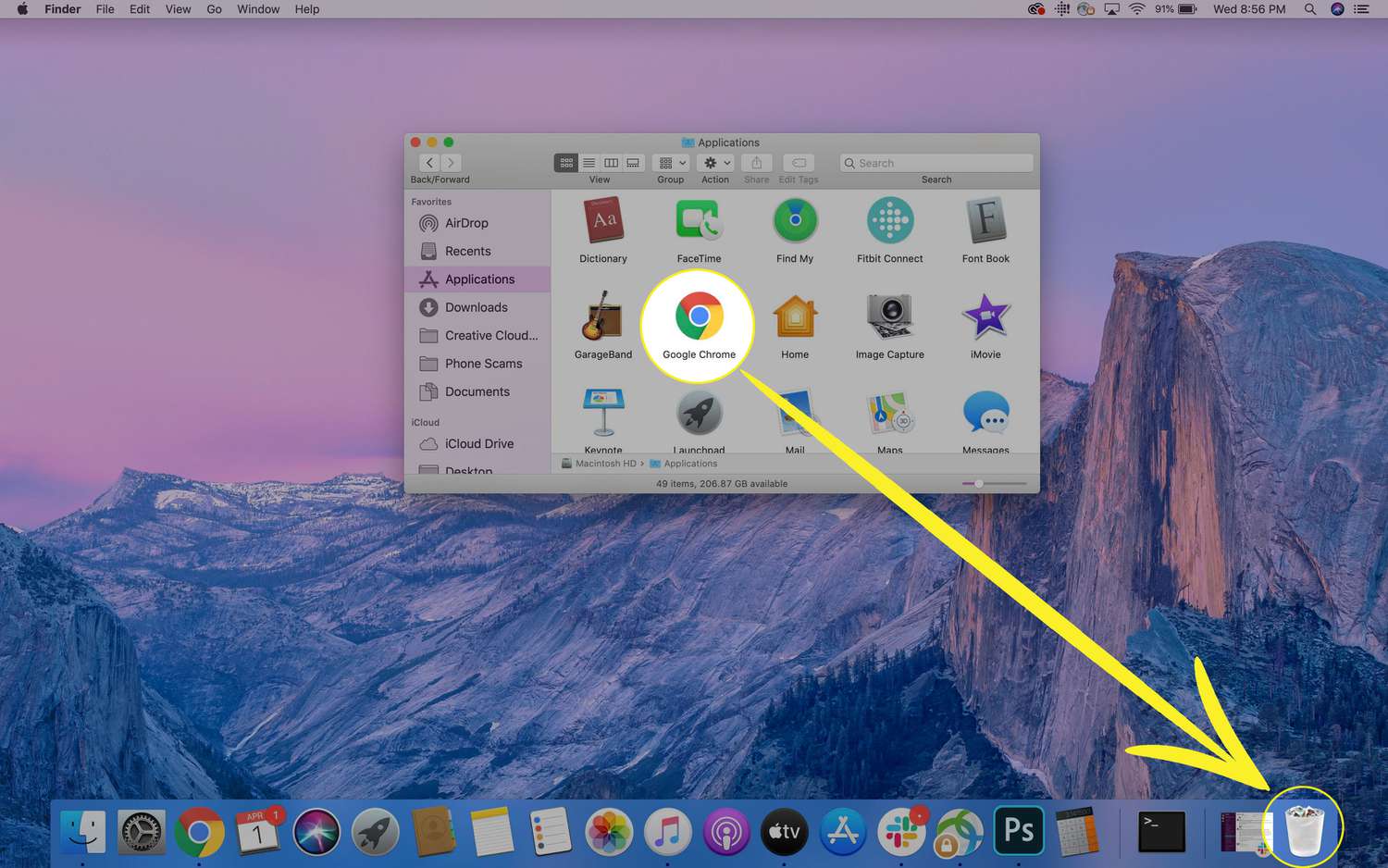Introduction
When browsing the web, encountering a frozen or unresponsive Chrome browser can be frustrating. Whether you're in the midst of important research, streaming your favorite show, or simply catching up on the latest news, a malfunctioning browser can disrupt your online experience. Fortunately, there are several methods to force quit Chrome on a Mac, allowing you to swiftly resolve the issue and resume your browsing activities.
In this article, we will explore three effective methods to force quit Chrome on your Mac. Each method offers a unique approach, providing you with options to address the unresponsive browser based on your preferences and comfort level with technical solutions. Whether you prefer using the Force Quit Applications window, navigating through the Activity Monitor, or utilizing Terminal commands, you'll find a suitable method to regain control of your browsing experience.
By understanding these methods, you can equip yourself with the knowledge to troubleshoot Chrome-related issues efficiently, ensuring that a frozen browser doesn't hinder your productivity or enjoyment. Let's delve into these methods and empower ourselves with the ability to tackle unresponsive Chrome browsers on Mac with confidence and ease.
Method 1: Using the Force Quit Applications Window
When Chrome becomes unresponsive on your Mac, using the Force Quit Applications window is often the quickest and most straightforward method to resolve the issue. This approach allows you to force quit the unresponsive Chrome browser without delving into complex technical procedures.
To initiate the Force Quit Applications window, you can use the following methods:
-
Using Keyboard Shortcuts:
- Press
Command + Option + Escsimultaneously to open the Force Quit Applications window. - Select "Google Chrome" from the list of applications.
- Click the "Force Quit" button to terminate the unresponsive Chrome browser.
- Press
-
Using the Apple Menu:
- Click on the Apple logo in the top-left corner of your screen.
- Select "Force Quit" from the dropdown menu.
- Choose "Google Chrome" from the list of applications and click "Force Quit."
By employing these simple steps, you can effectively force quit the unresponsive Chrome browser, allowing you to swiftly resume your browsing activities without the need for technical expertise or intricate commands.
The Force Quit Applications window serves as a user-friendly tool to address unresponsive applications, providing a convenient solution to resolve browser-related issues. This method empowers users to regain control of their browsing experience with minimal effort, ensuring that a frozen Chrome browser does not disrupt their workflow or leisure time.
By familiarizing yourself with the Force Quit Applications window, you can confidently navigate through instances of unresponsive Chrome browsers, swiftly resolving the issue and returning to seamless browsing. This method exemplifies the user-centric approach to troubleshooting, offering a simple yet effective solution to force quit Chrome on your Mac.
Method 2: Using the Activity Monitor
When encountering an unresponsive Chrome browser on your Mac, utilizing the Activity Monitor presents a comprehensive method to identify and force quit the problematic application. The Activity Monitor serves as a powerful system monitoring tool, providing insights into the resource utilization of running processes, including applications like Google Chrome. By leveraging the Activity Monitor, you can gain a deeper understanding of the browser's performance and swiftly terminate it if necessary.
To utilize the Activity Monitor to force quit Chrome on your Mac, follow these steps:
-
Accessing the Activity Monitor:
- Launch the Activity Monitor by navigating to Applications > Utilities, or by using Spotlight search (Command + Space) and typing "Activity Monitor."
-
Identifying the Unresponsive Chrome Process:
- In the Activity Monitor window, locate the "Google Chrome" process within the list of running applications and processes.
- You can use the search bar in the Activity Monitor to quickly locate the Chrome process by typing "Google Chrome."
-
Force Quitting the Unresponsive Chrome Process:
- Once you have identified the unresponsive Chrome process, select it and click on the "X" button in the Activity Monitor's toolbar.
- A prompt will appear, asking if you want to force quit the selected process. Confirm the action by clicking "Force Quit."
By following these steps, you can effectively utilize the Activity Monitor to force quit the unresponsive Chrome browser on your Mac. This method provides a detailed view of the browser's performance metrics, enabling you to make informed decisions regarding the termination of the unresponsive process.
The Activity Monitor offers a holistic approach to managing system processes, empowering users to troubleshoot unresponsive applications with precision and insight. By leveraging this tool, you can address Chrome-related issues efficiently, ensuring that a frozen browser does not impede your browsing experience.
By familiarizing yourself with the Activity Monitor and its capabilities, you can confidently navigate through instances of unresponsive Chrome browsers, leveraging its robust features to swiftly resolve the issue and return to seamless browsing. This method exemplifies a proactive approach to troubleshooting, offering a comprehensive solution to force quit Chrome on your Mac.
Method 3: Using Terminal
Utilizing Terminal to force quit Chrome on your Mac offers a direct and powerful approach to resolving an unresponsive browser. While this method involves entering commands into the Terminal application, it provides a high level of control and precision in terminating the problematic Chrome process. By leveraging Terminal commands, you can effectively force quit the unresponsive browser and regain control of your browsing experience.
To force quit Chrome using Terminal, follow these steps:
-
Opening Terminal: Launch the Terminal application by navigating to Applications > Utilities, or by using Spotlight search (Command + Space) and typing "Terminal."
-
Identifying the Chrome Process: In the Terminal window, enter the following command to list the running processes:
ps -ax | grep "Google Chrome"
This command will display the active processes related to Google Chrome, allowing you to identify the specific process ID (PID) associated with the unresponsive browser.
-
Force Quitting the Chrome Process: Once you have identified the PID of the unresponsive Chrome process, enter the following command to force quit it:
kill -9 [PID]
Replace [PID] with the actual process ID obtained from the previous step. This command forcefully terminates the specified process, effectively ending the unresponsive Chrome browser.
By following these steps, you can leverage the power of Terminal to force quit the unresponsive Chrome browser on your Mac. While this method requires entering commands, it provides a precise and efficient way to address browser-related issues, ensuring that a frozen browser does not disrupt your workflow or leisure activities.
Terminal empowers users with a direct interface to manage system processes, offering a level of control that is well-suited for troubleshooting unresponsive applications. By familiarizing yourself with Terminal commands, you can confidently navigate through instances of unresponsive Chrome browsers, utilizing this method to swiftly resolve the issue and return to seamless browsing.
In summary, the utilization of Terminal to force quit Chrome on your Mac exemplifies a proactive and technically adept approach to troubleshooting, providing a direct pathway to address unresponsive browser issues with precision and efficiency.
Conclusion
In conclusion, the ability to force quit Chrome on a Mac is an essential skill that empowers users to swiftly address unresponsive browser issues and regain control of their browsing experience. By exploring the three methods outlined in this article, users can equip themselves with versatile approaches to troubleshoot and resolve Chrome-related issues effectively.
The Force Quit Applications window serves as a user-friendly tool, offering a simple and accessible method to terminate unresponsive applications such as Chrome. Its intuitive interface and keyboard shortcuts provide a convenient pathway to swiftly address browser issues without the need for intricate technical knowledge.
Furthermore, the utilization of the Activity Monitor presents a comprehensive approach to troubleshooting unresponsive Chrome browsers. By leveraging the insights provided by the Activity Monitor, users can make informed decisions regarding the termination of the problematic Chrome process, ensuring a proactive and precise resolution to browser-related issues.
Additionally, the use of Terminal commands offers a direct and powerful method to force quit Chrome, providing users with a high level of control and precision in addressing unresponsive browser issues. While this method involves entering commands, it empowers users to efficiently terminate problematic processes, showcasing a technically adept approach to troubleshooting.
By familiarizing themselves with these methods, users can navigate through instances of unresponsive Chrome browsers with confidence and ease, ensuring that a frozen browser does not impede their productivity or leisure activities. Whether utilizing the user-friendly interface of the Force Quit Applications window, gaining insights from the Activity Monitor, or leveraging the precision of Terminal commands, users have a diverse toolkit to address unresponsive Chrome browsers on their Mac.
In essence, the knowledge and proficiency in force quitting Chrome on a Mac enable users to maintain a seamless browsing experience, swiftly resolving issues that may arise during their online activities. By understanding and applying these methods, users can navigate through instances of unresponsive Chrome browsers with confidence and ease, ensuring that technical hiccups do not hinder their digital pursuits.







